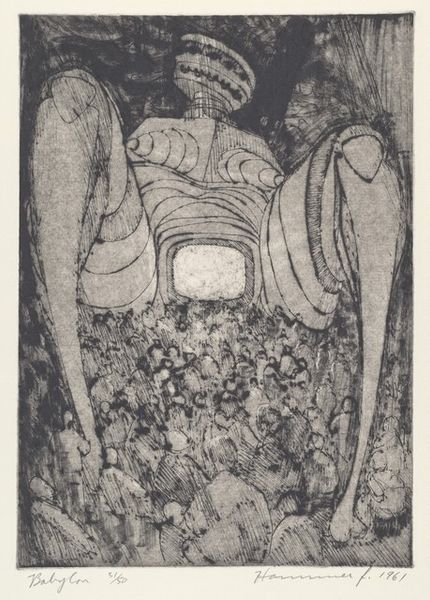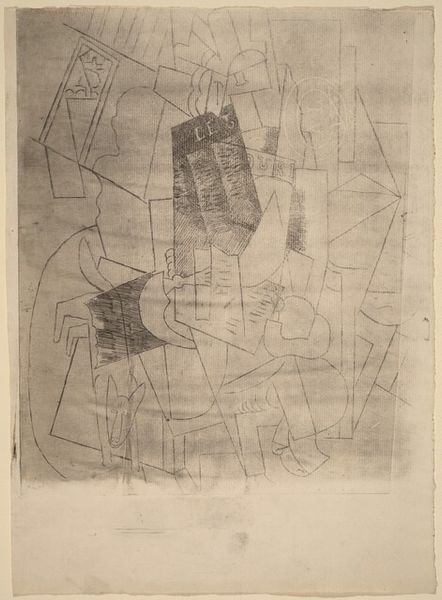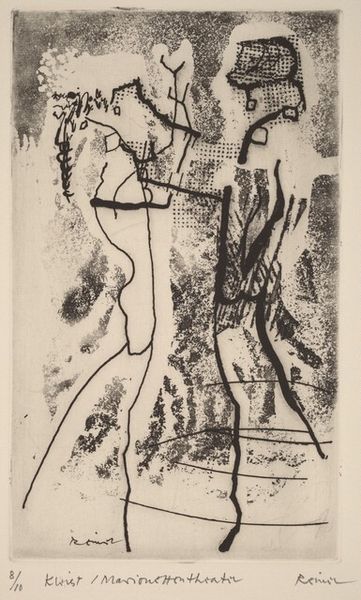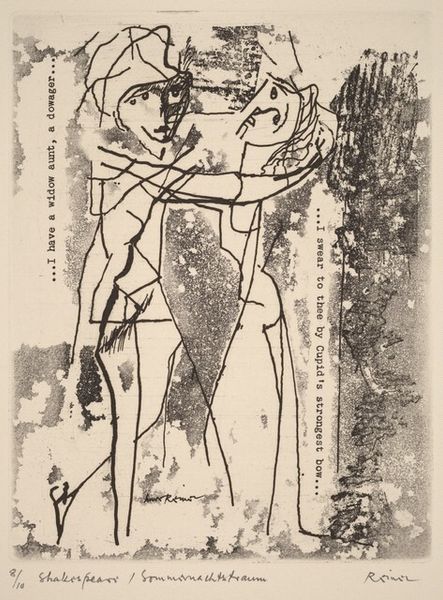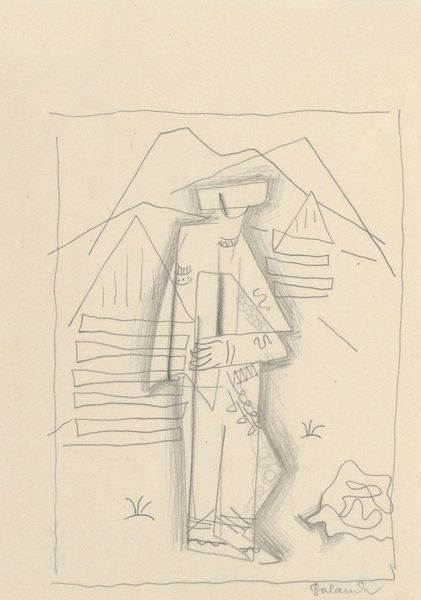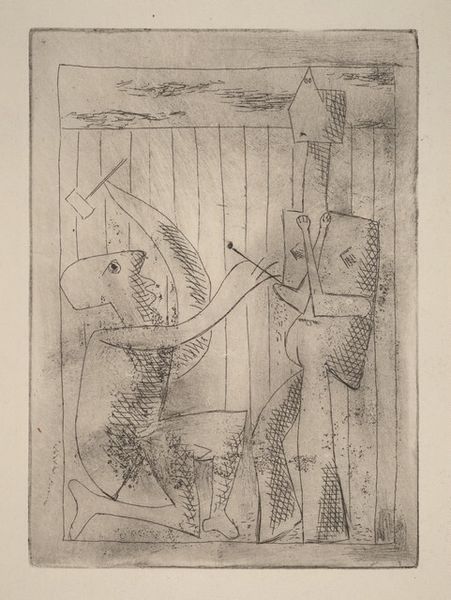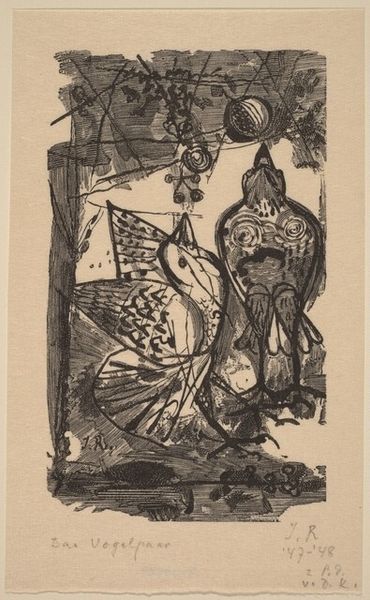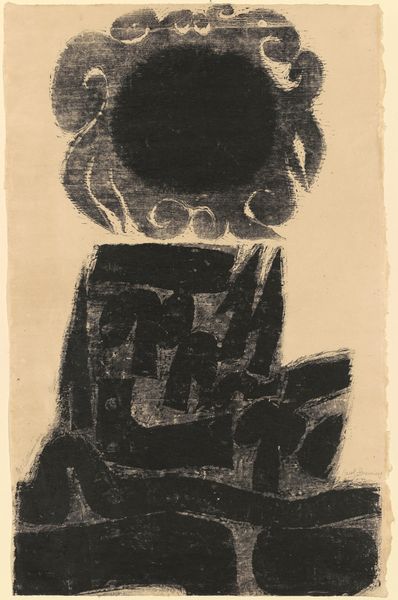
drawing, print, etching, ink
#
portrait
#
drawing
#
pen drawing
# print
#
etching
#
figuration
#
ink
Dimensions: image: 38.9 x 30 cm (15 5/16 x 11 13/16 in.) sheet: 50.6 x 35.7 cm (19 15/16 x 14 1/16 in.)
Copyright: National Gallery of Art: CC0 1.0
Curator: Welcome. Today, we are observing Roy Lichtenstein's "The King," dating from around 1950, created using ink and etching. Editor: This artwork gives me a peculiar feeling...isolated, perhaps, despite its central figure. The lines are stark, creating a kind of lonely, internal world. Curator: I would argue that Lichtenstein is toying with structure here, deliberately disrupting traditional notions of portraiture. Notice how the figure is rendered with a reduction to basic geometric forms. There is an economy of detail but a precision that makes the figure distinct. Editor: True. I think looking at it through a lens of mid-century societal expectations offers some additional insight. The “king” seems to represent a constructed masculinity and the limitations or constraints of patriarchal leadership. See how trapped and childlike he seems? He lacks, ironically, a certain gravitas that’s so demanded in the mid-century leaders. Curator: Intrigued! However, might we also consider Lichtenstein’s engagement with line, space and form for its own sake? The rough texture surrounding the character suggests a background of raw texture that sharply contrasts with his clear rendering of this royal portrait. The interplay establishes both pictorial and material relations that draw us into the picture's depth. Editor: But, isn’t art inherently political? Shouldn't we probe deeper? "The King" presents itself as an innocent figure. In this era of social conservatism, consider how artists subtly subverted conventions. Maybe that deliberate innocence masks some sharp commentary, a silent question about the status of rulers. Curator: Perhaps there’s space for both. But for me, what stands out, ultimately, is the artist’s mastery over line and how it alone creates form and depth and conveys that raw and subtle intensity. The semiotic weight assigned by Lichtenstein in a simple picture yields an intense feeling from a picture with barely more than a child’s coloring-book approach. Editor: Indeed. Thinking about it all over, the artist manages to subtly deconstruct archetypes while crafting a potent historical statement. It urges reflection beyond merely seeing. Curator: It provides plenty to mull over for the careful and imaginative viewer.
Comments
No comments
Be the first to comment and join the conversation on the ultimate creative platform.
